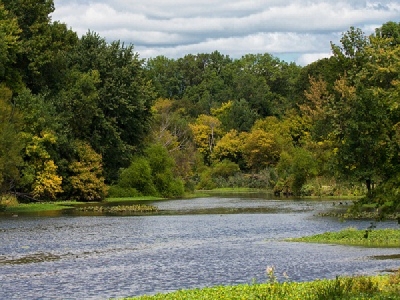
Posted on September 15, 2016
By Erin Delmore, NJTVNews
“We love the river, but we don’t really love it when it comes into our house,” said Cranford resident John Cappello.
Like many New Jersey residents, John Cappello’s home got hit hard during Hurricane Irene.
“We’ve had water come into the basement a couple of times, but since the 40 years that we’ve been here, they’ve done quite a bit of work, not only in the river here, but upstream, which have mitigated some of the little, little bits of flooding that we have gotten in the past,” John Cappello said.
Now, a new flood mitigation project is on the horizon. U.S. Sen. Bob Menendez toured the Rahway River Basin Monday with Congressman Leonard Lance and the U.S. Army Corps of Engineers.
“We have three major study areas: Robinson’s branch, Cranford and South Mountain Reservation that make up the entire study,” said Col. David Caldwell, New York district commander of the U.S. Army Corps of Engineers.
The 82-square-mile Rahway River Basin runs through 24 municipalities in Union, Essex and Middlesex counties, threatening homes and businesses much further than a stone’s throw from the waterfront.
In Millburn five years ago, Hurricane Irene sent water spilling over the South Mountain flood walls and rushing through the busy downtown district. Downriver toward Cranford, the 2011 storm left cars more than halfway under water on residential streets, filled basements and brought multiple feet of flooding into first floors. And further south in Rahway, water thigh-high, rescue boats sent to retrieve residents.
“We’re actually talking about raising houses, and then putting up essentially smaller flood walls around things like apartment complexes and certain businesses,” Caldwell said.
The U.S. Army Corps of Engineers’ plan involves around 9,000 feet of channel improvements in Cranford and the installation of two new outlet pipes at the reservoir in Orange. The plan includes widening and deepening the body of water at points, but not drastically changing its appearance.
“You won’t see 10 foot high concrete walls or something crazy like that along the side. That’s not what we’re talking about in this case,” Caldwell said.
“We built homes along waterfronts and then ultimately by a combination of … accumulation of silt, abutments that were built alongside, the changes in climate patterns that we’re facing, all of those come to bear and so how do we deal now with that reality and how do we minimize it?” Menendez asked.
I asked Cranford realtor Arthur Kiamie how it’s affected the market.
“I can’t think of a single house that has not sold because it was located in a flood plane. It’s a matter of price. Then, the next question is, what has been the effect upon the price? Frankly, when I go out and do a market analysis, I don’t place a whole lot of value on the fact it’s on a flood plane. There’s enough demand to override that consideration,” he said.
It’s a common element on some Cranford real estate listings — “NOT IN FLOOD ZONE”.
“If you continuously say this property’s not in a flood plane, that implies that Cranford suffers a very great deal of flooding. In reality, it does not. It does have some areas that flood. Those people have taken measures, they’ve made improvements for the most part. Once again, I don’t see a very profound effect upon value. So apparently people want to live in Cranford,” Kiamie said.
Sen. Menendez is pushing to fast-track the flood mitigation project. A bill before the Senate and House would allow the project to go straight to pre-construction after a feasibility study is completed. That’s expected to go up for public review by the end of October.
Source: NJTVNews





